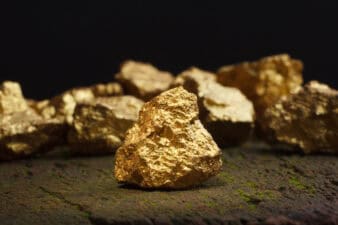At 4.70%, Teck Resources Ltd. (TSX:TCK.B)(NYSE:TCK) offers quite an irresistible dividend yield. In fact, as of writing, Teck’s yield is currently the fourth highest on the TSX, and this has a served as a major attraction for investors.
Since 2008, Teck has increased its dividend by 80%, and investors could count on a stable, growing stream of income into their accounts, which served a source of stability over the past several years as Teck’s earnings and share price were hit by weak commodity prices.
It seems as if the stability of this dividend has been called into question, however, as Teck’s Chief Financial Officer Ronald Millos stated that the board may consider cutting Teck’s semi-annual dividend—due in July–if the coal market doesn’t improve. Is Teck’s dividend at risk, and if so, is it still a worthwhile reason to buy the stock?
The current situation with Teck’s dividend
Currently, Teck pays a semi-annual dividend, due twice a year in January and July. In 2014, this dividend totalled about $531 million, which was well within Teck’s ability to finance. In fact, over the course of 2014, Teck was able to generate an impressive $740 million of free cash flow—even in the weakest year for coal prices in seven years—which enabled Teck to easily cover its dividend, with a surplus of cash.
Since Teck has a semi-annual dividend, it is able to build its cash reserves one quarter, and then use the accumulated cash plus the current quarter’s free cash flow to pay its dividend. Since Teck’s combined free cash flow exceeds its dividend, Teck has been able to successfully fund its dividend with its own free cash flow and prior cash reserves, without needing to rely on its credit facilities.
In Q3 2014, for example, Teck reduced its cash balance from $2.1 billion to $1.8 billion—largely to cover the dividend due in that quarter—but increased its cash balance from $1.8 billion to $2 billion in Q4 2014 when no dividend was due. As a result, Teck currently has a healthy $2 billion of cash on its balance sheet, plus an unused $3 billion line of credit.
You may be wondering then, why is Teck considering cutting its dividend? If the company has ample cash, unused credit facilities, and free cash flow, it does seem unnecessary. The answer, is that Teck is devoted to maintaining a strong balance sheet, as well as its investment-grade credit rating, which is very prudent given the volatile nature of Teck’s earnings.
In January, S&P downgraded Teck’s credit rating, and since rating agencies use metrics like the debt-to-equity ratio to determine financial strength, Teck may decide to focus on maintaining liquidity at the expense of a larger dividend.
The probability of a cut depends largely on what happens with the coal market, as Teck estimates that a $10 move in the coal price can affect earnings before income, taxes, depreciation, and amortization by a huge $320 million. With 30 Mt of supply cutbacks announced to coal production, it is very possible coal could see a price rebound by the second half of 2015, protecting Teck’s dividend.
What should you do?
There is a decent possibility that Teck could cut its dividend due in July of this year. However, since Teck has a strong financial position, and commodity markets are expected to improve going forward as planned cuts to coal supply are implemented, investors can be confident Teck’s dividend is secure after any planned cut.
With an already high yield, it is likely that Teck would still have an above-average yield after any dividend cut, and if the risk of a potentially smaller yet stable yield is tolerable for you, Teck should not be ruled out as a dividend investment.






